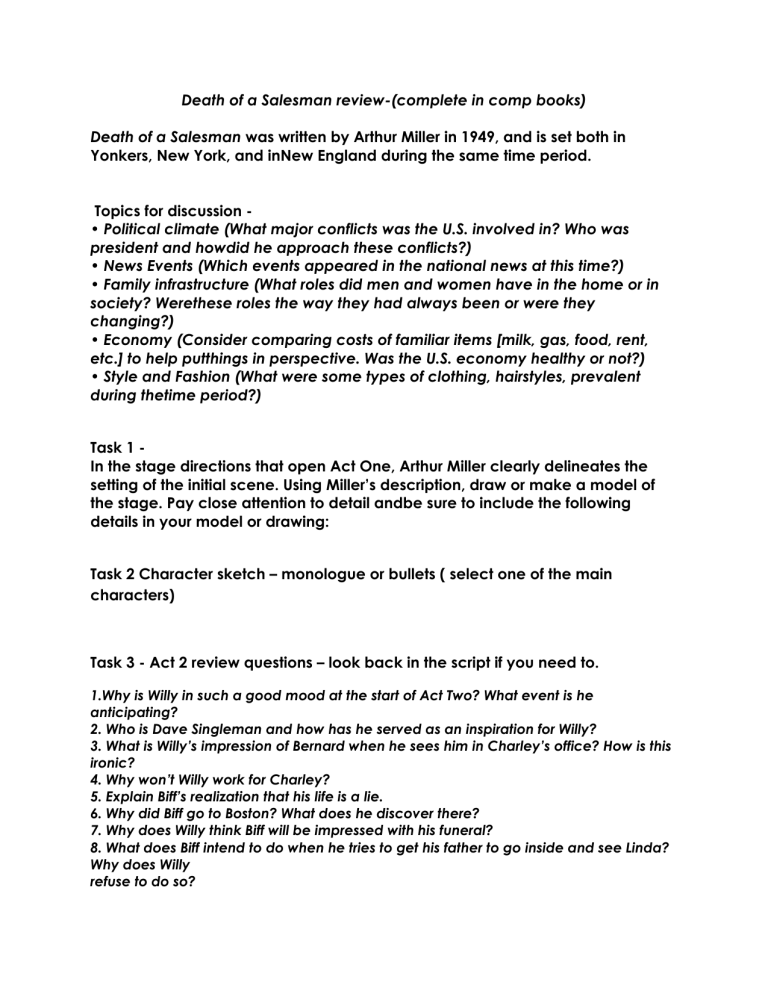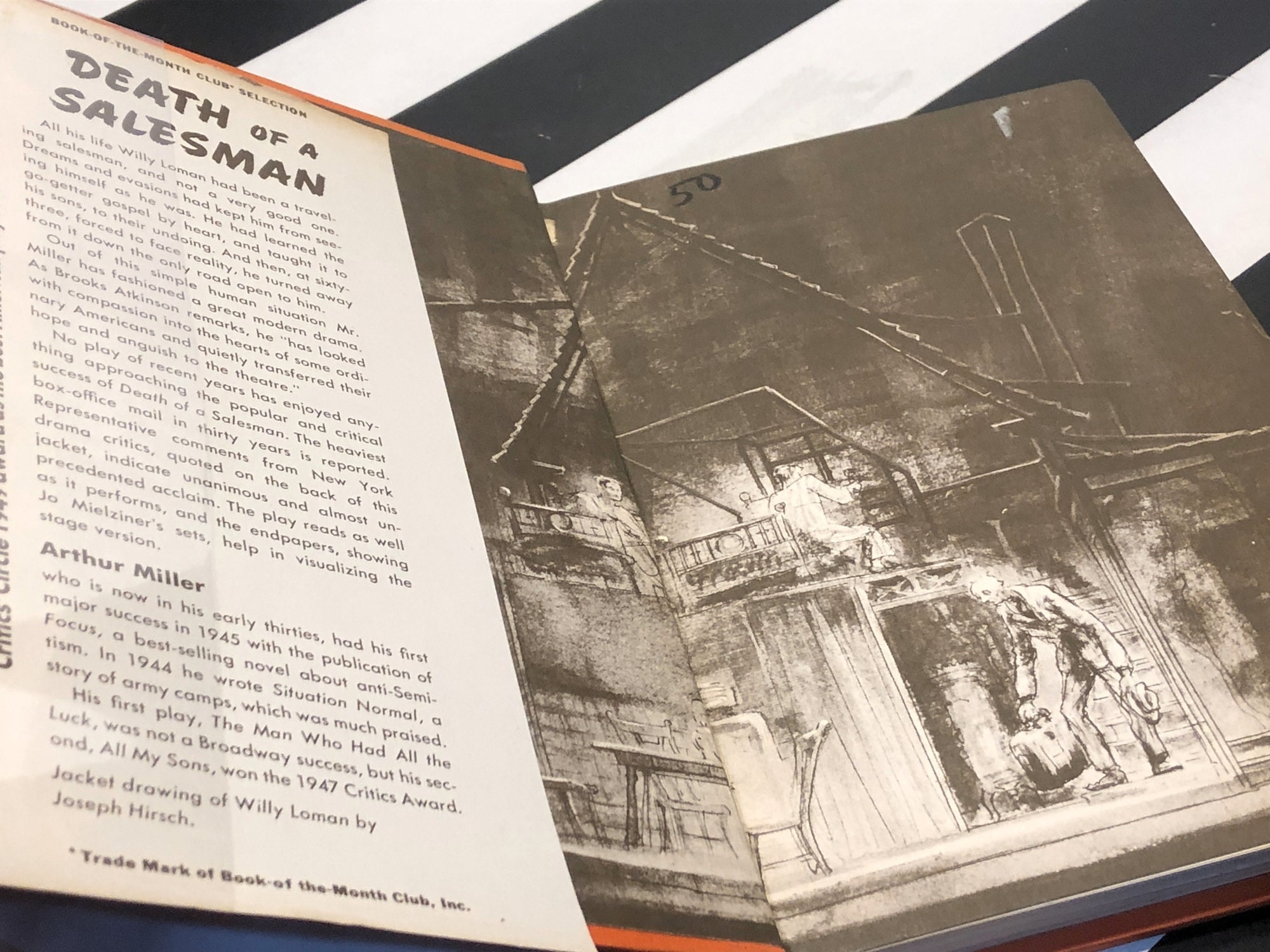

Thus, through the masses and their use of scapegoats, society has the brutal power to crush the individual.ğinally, the societal pressure placed on honor is strong enough to break a man, as shown by John Proctor and Willy Loman. He lays the blame squarely on Willy for filling his mind with exaggerated self-conceit…” (Sharma 370). With the realization that his father is a fraud comes his deliverance…By trying to make a hero out of Biff realizes Willy was only obscuring his identity and to that extent not exactly helping.

Sharma, “In the traumatic experience in the hotel room, however, achieves an insight. Willy’s overprotectiveness only puts off Biff’s coming of age, which occurs during his discovery of his father’s licentiousness with the anonymous woman. Biff blames his father, Willy, for not leading him correctly and trying to shield him from the real world. Scapegoats are used quite differently in Death of a Salesman. The people of Salem blame their problems on the “witches”. Thus, Tituba, the slave from Barbados, is blamed for her “conjuring” and is hanged, along with many others. Because the people fear what they do not understand, anything out of the ordinary is automatically supernatural in their eyes. The people of Salem blame witchcraft for all of their problems, whether Sarah Good and the death of a neighbor’s pig, or Rebecca Nurse and the Putnam babies. The difference, however, is that Death of a Salesman has a single person as a scapegoat, whereas the people of Salem blame an idea before individuals. Thus, the forces of society crush Willy as an individual by making everything he has ever known obsolete.ğurthermore, both The Crucible and Death of a Salesman portray the enormous power of society through the use of scapegoats. You see what I mean? They don’t know me anymore. Today, it’s all cut and dried, and there’s no chance of bringing friendship to bear-or personality. There was respect, and comradeship, and gratitude in it. In those days there was personality in it, Howard. It is evident in Willy’s scene with Howard, in which he is fired, that the sides are clearly defined, and Willy’s morals are no longer valuable to the company. Willy’s nostalgic, almost quixotic ethics contrast with those of society, Howard, and modern business.
#Death of a salesman time period free
Foster, “The values that seem to be represented in Willy, the ‘good’ values that function in the play as implicit criticisms of society’s ‘bad’ values, are the familiar romantic ones: nature, freedom, and the body free self-expression and self-realization individualism and the simple life…” (Foster 3). This time, however, the conflict arises between Willy and the ethics of the new salesman. Similarly, Death of a Salesman is plagued with the formation of sides. Thus, they react by unleashing their imaginations on the older townspeople. The children are completely restricted in their actions, particularly by the elderly, who represent their authorities. Likewise, the children form sides against the older women of the group, but for different reasons. Their position in society causes them to fear, so they oppose the sages of the group who do not have fear. They fear what they do not understand, so they fear the supernatural connection between witchcraft and the deaths of their newborn children. The Putnams are the primary adult offenders in the town. For example, in The Crucible, the townspeople and the young girls take sides against the older women of the town.

The two plays exhibit the theme of society’s power by showing a development of opposing sides, or enemies. Society contributes a great amount to the plight of a protagonist, and Miller portrays this theme through his characters and their interaction with one another. Finally, the sacrifices of Proctor and Willy show the pressure that society places on men to be honorable. The use of scapegoats like Tituba and Willy further develop the theme. They particularly show this theme through the formation of masses or of opposing sides, as with the girls and townsfolk of The Crucible and the company values in Death of a Salesman. Although the plays take place in different time periods, they each convey the force of society through setting and conflict. Two plays by Arthur Miller, Death of a Salesman and The Crucible, both contend that society is the indifferent, sometimes brutal, force that crushes an individual.


 0 kommentar(er)
0 kommentar(er)
